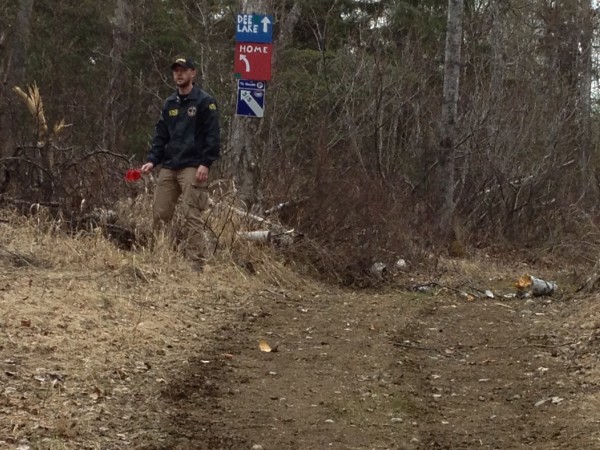A plane that crashed near Anchorage killing all four aboard on April 20 was engaged in aerial photography over Birchwood at the time of the accident. The National Transportation Safety Board Wednesday released the first of three reports on the incident.

According to the report, the Cessna 172, piloted by George Kobelnyk, was flying under visual flight rules [VFR] about two miles from the Birchwood airport in good weather at the time of the accident. Visibility was nine miles with calm winds and cloud cover at 8,000 feet. The purpose of the flight was an aerial survey of land adjacent to the airport, and FAA radar data indicates the plane was flying low, making several turns near the edge of the airport’s property before it crashed.
Shaun Williams led the NTSB investigation on the day of the crash. He says the plane was making basic maneuvers, and not doing anything inherently dangerous.
“We’re still evaluating everything at this time. We are still in the early phases of the investigation. It’s just stating what the weather was at the time, but we are still going to go back and look at the winds and see what affects maybe the cloud layer had on visibility or anything like that.”
Investigators say the plane lifted off from the Birchwood airport, achieved a height of about 1,800 feet than made a 360 degree turn before continuing along the shoreline of Knik Arm. Several more turns were made at altitudes between 2000 and 2400 feet. The plane again turned and flew back over the Knik Arm shoreline, descended to 900 feet, turned again, ascended to 1100 feet, then back down to 800 feet. That is the last position recorded by radar data.
The preliminary report indicates the plane initially hit a 100 foot tall spruce tree, then left a trail of wreckage almost 500 feet long. Fragments of the plane, including parts of the landing gear, were strewn along the debris field. All the plane’s main components were found at the main debris site, but a fire on impact consumed much of the wreckage. Williams says a second, more factual report will follow the preliminary report, and a third report indicating probable cause will follow in about a year.
“We look at three main areas in any investigation: the man, machine and environment. By man, we look at the pilot, we look at his history, his training, 72 hours for fatigue, or anything like that, stressers or anything. By machine we are going to look at the airplane. We are going to go back through all the maintenance records and see how it was maintained and what work was done on it. And by environment is where we are going to look at the weather, and any conditions, air traffic, anything that could have affected the flight.”
Pilot George Kobelnyk age 64, was killed in the crash, along with passengers Christian Bohrer, 20, Sarah Glaves,
36 and Kyle Braun, 27.
APTI Reporter-Producer Ellen Lockyer started her radio career in the late 1980s, after a stint at bush Alaska weekly newspapers, the Copper Valley Views and the Cordova Times. When the Exxon Valdez ran aground in Prince William Sound, Valdez Public Radio station KCHU needed a reporter, and Ellen picked up the microphone.
Since then, she has literally traveled the length of the state, from Attu to Eagle and from Barrow to Juneau, covering Alaska stories on the ground for the AK show, Alaska News Nightly, the Alaska Morning News and for Anchorage public radio station, KSKA
elockyer (at) alaskapublic (dot) org | 907.550.8446 | About Ellen




